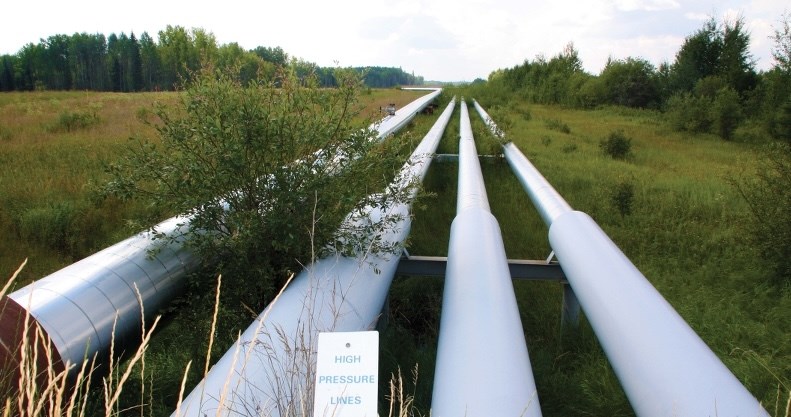The recently-released 2024 Pipeline Performance Report by the Alberta Energy Regulator (AER) shows a decrease in the number of pipeline incidents in the province.
According to the AER, total pipeline incidents declined by 12 per cent from 350 in 2023 to 307 in 2024, with the majority involving little to no fluid release. The report also noted that high-consequence reports dropped from seven to five over the same period.
The AER regulates more than 400,000 km of pipeline within the provincial boundaries of Alberta that are used to transport natural gas, crude oil, and other resources.
Renato Gandia, a media spokesperson with the Alberta Energy Regulator, said the decline in pipeline incidents over the past year reflects the continued efforts of industry and the regulator to prioritize safety, prevention, and early detection.
Report findings, Gandia explained, show a continued downward trend in incidents classified as “high consequence”, which he says are incidents that had a significant impact or adverse effect on a sensitive waterbody, the environment, wildfire, livestock, workers, or the public.
“At the AER, we are responsible for ensuring companies develop Alberta’s resources safely and responsibly,” Gandia told Lakeland This Week. “This responsibility includes holding companies accountable for their performance and helping companies improve.”
The Alberta Energy Regulator, according to Gandia, takes various actions to improve pipeline performance in the province, including inspecting construction to verify that proper practices were used, along with educating operators about the AER’s requirements, industry best practices, and emerging issues.
Furthermore, the AER reviews every pipeline incident to verify if a company correctly determined the cause of the incident, and if it was in compliance with the agency’s requirements.
The AER also investigates each incident to understand its cause in a bid to work towards improving pipeline performance and preventing future incidents and identifies areas for improvement in a company’s safety and loss management system and pipeline integrity management programs.
“We analyze data on pipeline incidents to identify trends and use what we learn to educate companies during pipeline inspections and by sharing information at conferences and operator awareness sessions and through publications,” Gandia stated.
The pipeline report, which was released on June 10, also stated that 72 per cent of pipeline incidents resulted in little (less than one cubic metre, or approximately six barrels) to no release of fluids at all. The report stated that internal pipeline corrosion remains the leading cause of incidents.
As for the significance of its annual Pipeline Performance Report, Gandia said it is produced to share credible and transparent information about the incidents that are reported to the agency.
“The data from the report also help companies improve their performance and it complements the AER’s compliance assurance programs to hold companies accountable,” Gandia stated.
Gandia explained that companies can benchmark themselves against their peers by reviewing incident data from other operators.
“This allows them to better plan proactive inspections and evaluate their own procedures and risk management strategies,” he explained.




